Issue 18 - Three Things about Cairn 2e
2025 #5: Wherein I might need a bit of cheese to go with my whine.
Hello all.
It’s been a minute, but I’ll spare you all the reasons why and just get on with things if there are no objections. Any objections?
…
Hearing none, what say we talk about…
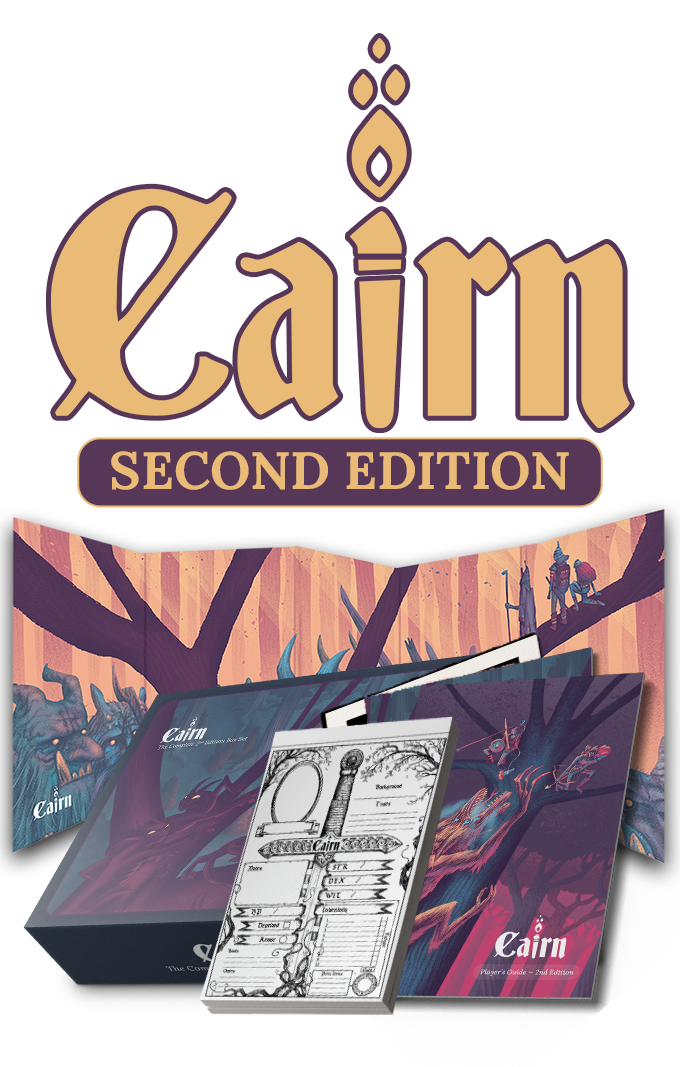
Cairn is one of those new-school Old School roleplaying games. Most folks I know broadly tag the game as OSR, though some would certainly argue it is pure, unadulterated NSR.1
Whatever you call Cairn, a few things are true:
Written by Yochai Gal, it is rooted in, and based on, Chris McDowall’s seminal RPG Into the Odd.
Gal was aiming at making a game that was better suited for classic D&D play than Into the Odd was. That is, leaning in to some familiar and many would say classic medieval fantasy tropes—elves, dwarves, wizards in towers, fae-haunted woods, magic potions, magic spells, monsters you’d find in any of TSR’s original Monster Manuals… you get the idea. Into the Odd very much has a late medieval / renaissance / proto-industrial vibe running through it. There are guns, factories, contraptions and all manner of other bits and pieces that suggest a later and I would say more Dickensian setting than the one early versions of D&D conjured up. The key angle I’m getting at here is that Gal originally wrote Cairn so it would better support playing through modules that were more straight-ahead fantasy.
When he put together the first edition of Cairn, the author pulled in elements from McDowall’s follow up work, Electric Bastionland2, and from Ben Milton’s Knave.3
Cairn is a lean and mean rules-light game. Characters don’t have classes or levels, magic is level-less, there are only three attributes, there are no to-hit rolls in combat, hit points/protection values are low, and there are no skill or attribute checks—only saves.
The game has a lot going for it if you like the style of play it supports, which is a breezy, quick-moving set of interesting mechanics that never get in the way. It requires quite a lot of trust between the Warden (GM) and the players4, and it leans heavily on the Rulings over Rules mantra that is so frequently cited as being a foundation stone in the OSR. (Interestingly, there are some games built on top of Cairn that fully unwind that, providing loads more mechanical crunch for combat, healing, magic, skill checks and more.)
Anyhoo, I really enjoyed the first edition of the game, and had high hopes for where Gal would take things with the second edition.
Cairn is on my mind because my second edition box set arrived a while back, and because I’ve been running (and enormously enjoying) a play-by-post (PbP) game of Black Wyrm of Brandonsford (BWoB) over on gamersplane.com. In addition to reading it and petting it gently, I’ve had other experiences with the RPG as well. Last year, I played in a fantastic PbP game where the GM (Hi Len!) developed his own faction-filled, dinosaur-heavy, treasure-hunting jungle setting. Was super-fun. And then a couple of years ago, I almost ran Cairn at Gamehole Con for a couple of goobers who couldn’t get past character generation and the fact that a hand-cart occupied both hand slots when used. More on that, and the inventory system, shortly.
So… what are these three things referenced in the title of this horribly-named Substack post? Three niggles I have with the second edition of the game. Three annoyances, three things that are each pretty easy to fix, but when piled together… make me want to run and play a different game.
I think I was hoping the new edition would clean a couple of those quirks up, but what it actually did was add a new one.
Let’s get to it.
NIGGLE #1: TOO FEW INVENTORY SLOTS
Like many modern OSR / NSR games, Cairn has a slick slot-based inventory system. See, in this genre, tracking what you carry is important. Knowing how much treasure you can haul, making trade-offs by wearing heavier armor, using more powerful weapons vs. lugging more gear… these should be sugar cubes for the sweet tooth of the average OSR player. You have decisions to make, and they matter.
Slot-based means no tallying weights, no equating things into equivalent amounts of coins… you can just carry a certain number of Things. Petty items (a ring, a necklace, an ear, a letter from your dead father, written from beyond the grave) don’t count against your slots, and small items can be bundled into groups of three in a single slot (think torches, rations and the like). Average items consume one slot, and Bulky items (e.g. two-handed weapons, heavy armor, a large tent) consume two.
With me so far? Pretty cool, right? Since spell books (each containing only one spell) take up a slot5, wizardly types are incentivized to save their slots for magic goodies rather than loading up on weapons and armor… kind of backing into the original D&D cliché of magic-users being unarmored and lightly armed.
In play, a problem emerges. Nay, two.
Each PC has ten slots. Ten places to put things: two hand slots, two body slots, and six slots in your pack / on your back. Trouble is, you really have nine. The moment slot ten is filled, you’re encumbered and cannot carry even a single item more—which means you lose your Hit Protection (HP) and will take (potentially critical) damage directly to your Strength (STR) attribute if, you know, something bad were to happen to you.6
In the end, there just aren’t enough slots. This whole system is intended to force difficult decisions, to support some old class features, and to encourage the use of both hirelings and pack animals. But it’s rare to see a Cairn PC emerge from character generation who isn’t already thinking about what they are going to need to almost immediately drop. Which leads to the second issue…
Micro-management. Consider that you can only fit so many coins in a slot—it’s not specified, but most folks rule in the 200-500 range. And consider that loads of regular adventuring gear (rope, lantern, oil, bedroll, spikes, map, book, candles, etc.) each take up a full slot… and that the game’s Fatigue mechanic means you lose one or more slots when fatigued… You now have a recipe for switching things around on your sheet constantly. In the jungle game I mentioned, we resorted to burying caches of things we didn’t want to lose, but couldn’t carry. In an otherwise spectacular game, it was a fairly significant annoyance, always having to stop and manage inventory. Also, eyeballing what each PC was carrying… it just didn’t pass the gut test. It didn’t feel like we were carrying too much when suddenly we had to shed meaningful items.
This is all easily fixable. Allow high STR to affect the number of slots; simply allow 12 overall slots rather than 10; have more expensive backpacks available that can carry more than 6 items; bundle like items in groups of more than three; allow for up to 12 or 15 slots to be carried after tripping encumbrance at 10, etc. In the PbP I’m running right now we’re starting to run into this. We’re keeping it rules-as-written at the moment, but I suspect I’m going to tweak things at some point.
NIGGLE #2: THE BORKED ECONOMY
This is a simple one. I think Yochai was on the happy juice or something when he crafted these tables… and when he selected a gold vs. silver standard.7
Check out the first page of the Marketplace:
I’ll admit—yes, it’s a fantasy game and doesn’t need grounding in reality… but boy I get irked when I see swords cost as much as spears and axes in my RPGs. The amount of steel, craftsmanship and crafting time needed for those three things are very different. Armor seems far too cheap as well.
The real bust, though (I ran into this in my BWoB game, where I just defaulted instead to some numbers in the module) are the values in the Upkeep & Recovery section. TEN gold for three rations? The same for one night’s room & board… the same price… as a sword?
This is again pretty easy to fix—but one of the killer features of the OSR is interoperability. Attributes. Hit Dice. Hit Points. Gold pieces and what things are (roughly) worth. This just doesn’t jive with the OSR modules I have, and I think it’s a bigger stumble than it might appear, making some gear cheaper and more easily accessible than it should be early in the game, and eating and sleeping a needlessly substantial drain on resources.
NIGGLE #3: CHARACTER GENERATION
Okay. The big one. This is very much a personal taste thing, but for my liking there is too much implicit world-building in the random character generation tables, and the tone is way off from what I normally strive for in my own OSR games. Meaning that the system, out of the box, doesn’t pair well with many of the adventures I like, or with the way I want to run them. At my table, certain results from these tables will throw the tone off dramatically, even if I’m not in a particularly miserabilist, die-in-a-ditch kind of mood.
In OSR games, I often dig playing simple characters whose histories and personalities emerge during the game. Knaves and ne’er-do-wells, vagabonds and drifters. Outsiders and outcasts. Or I might latch onto something in the setting or the adventure—an order of magic-users, an infamous prison, a mercenary band my fighter used to belong to—and incorporate those in a way that tells me a bit about my PC. If we’re playing fast and loose, the GM might allow the creation of those kinds of elements out of whole cloth… but even then, in my circles most players make quite an effort to make sure the background bits they come up with reinforce the setting and its tone.
Cairn 2e has a bunch of system-as-setting going on in the Bonds, Omens, and Backgrounds tables. While the entries are often creative, amusing, and fun… they rarely square up with what I want in my game. Let me give you a couple of examples to better explain what I mean.
Bonds
Everyone has Traits8 and Bonds. Here are the first 10 (of 20) Bonds…
Cool, right? These entries are cool. And they immediately distract the player from whatever task might be at hand. Which in an OSR game that’s not a sandbox… you know, is the adventure in front of you. It’s basically fuel for the “why would I adventure here?” fire. You have this other very interesting thing that came along with your character… of course you’re going to focus on it. Which could be problematic if all members of the party are just drawn to their Own Unique Thing.
I should note that this doesn’t have to happen, but I’ll also tell you I have seen it happen, first-hand.
Omens
The youngest PC (age is rolled, 2d20+10) in the party also has an Omen. The first ten entries on that table:
These are great little adventure seeds and plot hooks to be explored all on their own. Since there’s just one of these in play, I’m down with including them—even if you’ve gathered a group to play a very specific thing, like Winter’s Daughter or one of the one-page Trilemma Adventures.
Backgrounds
Here’s where I have the most trouble. Right out of the gate, the backgrounds themselves don’t particularly speak to me since I’m more of a toil-in-the-muck, mud and blood OSR kind of guy. In more traditional OSR / D&D I tend to vastly prefer just the three or four original classes.9
Here’s the full list from Cairn 2e:
Each background comes with the following:
A short description of the background
Starting gear
Two d6 tables that answer custom questions for each background
Let’s look at one: the Aurifex.
If heavy-duty alchemy wasn’t part of your setting before… well, it is now! As with the Bonds above, these are neat ideas. I’m just not sure they’re ideas I want in every Cairn game. They’re very flavorful, and when every PC is built this way… it’s not hard to imagine that the result is a ‘busy,’ self-interested and easily distracted party. In these tables, you can wind up with mystical and mundane pets, metal arms, a blunderbuss, “portable iron lungs” (to breath underwater), an undead servant, magical seeds, lycanthropy, explosives, plant-like skin, magical weapons, a warhorse and more.
For me at least, it’s all a bit much. The solutions are pretty easy: don’t roll on these tables or offer up these backgrounds… or just re-write them so they support the vibe you’re looking for.
SUMMING UP
As I’m getting to the end of this, I’m feeling lame about my complaints. Cairn 2e is a freaking solid game. But I’ve come to realize something—it’s just not my kind of OSR. I prefer human-centric OSR games. Check! But I also like the characters to encounter, search for and collect the really cool in-world stuff—rumors, artifacts, spells, familiars, etc. Having the PCs start with so much going on is orthogonal to my own (admittedly narrow-minded) preferences, and it feels like we’re immediately turning the OSR tenet of the world being more important than characters on its head.
Yochai Gal has talked on his podcast Between Two Cairns about how the traditional motivations for OSR play don’t resonate with his PbP Cairn players. They’re not after treasure. They don’t look for adventure or dive into dungeons simply because they’ve run across them. So, with Cairn 2e, I think Gal made a very purposeful design decision: to offer loads of hooks, incentives, and ideas regarding each PC’s place in the world, at the start.10
It’s nifty. And it’s not for me.
ONWARD!
Indeed, onward to… other Into the Odd-inspired stuff in future issues of this Substack. Something I’ve noticed lately is that my RPG tastes are changing. I still love rules-light, minimalist games that ‘get out of the way’… but I’ve got an itch for a bit more crunch, and it turns out there are a number of games in the Mark of the Odd (MotO) family that fit that bill. Of most prominence is McDowall’s highly anticipated Mythic Bastionland (which should be shipping soon!), but I’ve also run across a work recently called Block, Dodge, Parry by Lars Huijbregts that contains a load of very modular rules for MotO games. There are rules for social conflict, complex tasks, careers and skills, magic, and—in spades—combat. Expect to see my thoughts here on both of these works when I can find the time.
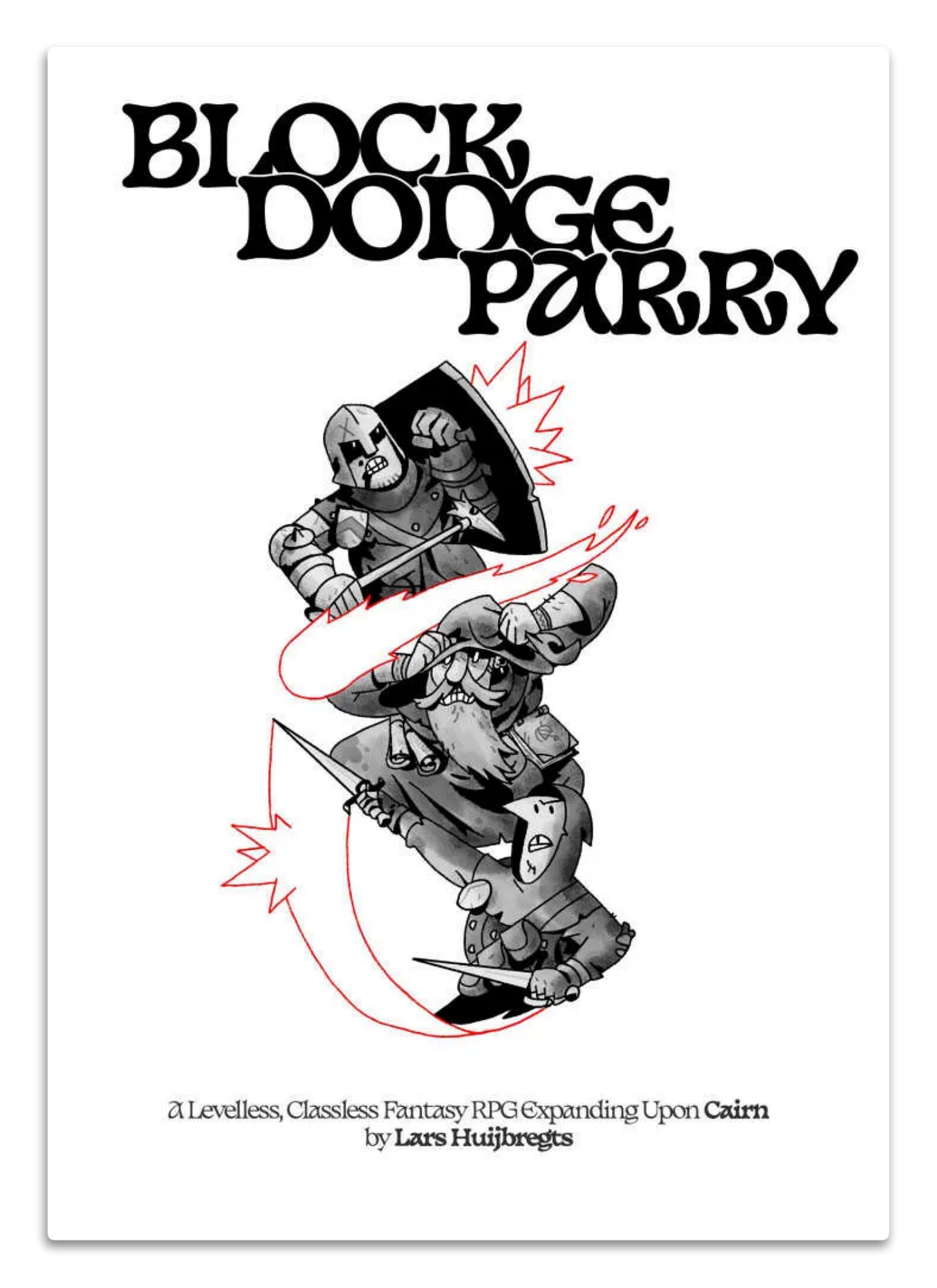
Until next time then, thanks for gathering around the Hearth.
New School Renaissance, as opposed to Old School Renaissance / Revival. Whereas ‘classic’ OSR games include Basic Fantasy, Old School Essentials, Swords & Wizardry, OSRIC and other retroclones of early versions of D&D, the NSR games are seen as having more modern mechanics and approaches, while still digging on the same old school vibes, themes, and aesthetic. Me, I actually prefer to refer to games like Cairn, Into the Odd, The Black Hack, Shadowdark, Electrum Archive, MÖRK BORG and others that soak everything in a stylin’ new mechanics brine, “neo-OSR.”
But that never caught on. Harrigan sad.
Scars came from Electric Bastionland, for example.
The approach to inventory, you are what you carry, level-less spells that take up a whole slot, etc.
More or less the same level as something like an FKR game would need. (That’s Free Kriegsspiel Revolution, which I’ve talked about in this Substack before. Google that shit, it’s cool.)
Knave does this too, and I don’t particularly love it there either.
But that doesn’t happen very often in RPGs! Especially in games I GM. “Creampuff GM,” the gang calls me.
Can’t help it. I vastly prefer a silver standard in all my D&Ding. Having gold everywhere devalues it.
I will admit I was a little disappointed in the 2e Traits as well, which are a nice series of d10 tables. But ten entries just isn’t enough to not see a lot of repeats. I’d like to have seen d20 if not d66 or d100 tables. Knave 2e did a great job here I think, going bananas with the tables.
Cleric, Fighter, Magic-User, or those three and the Thief. If I’m trimming things down to three in my own class-based OSR games, I tend to eliminate the Cleric.
In the end, it feels like Cairn 2e is really good at running Cairn games… and perhaps less good at running generic / classic / bog-standard OSR stuff.




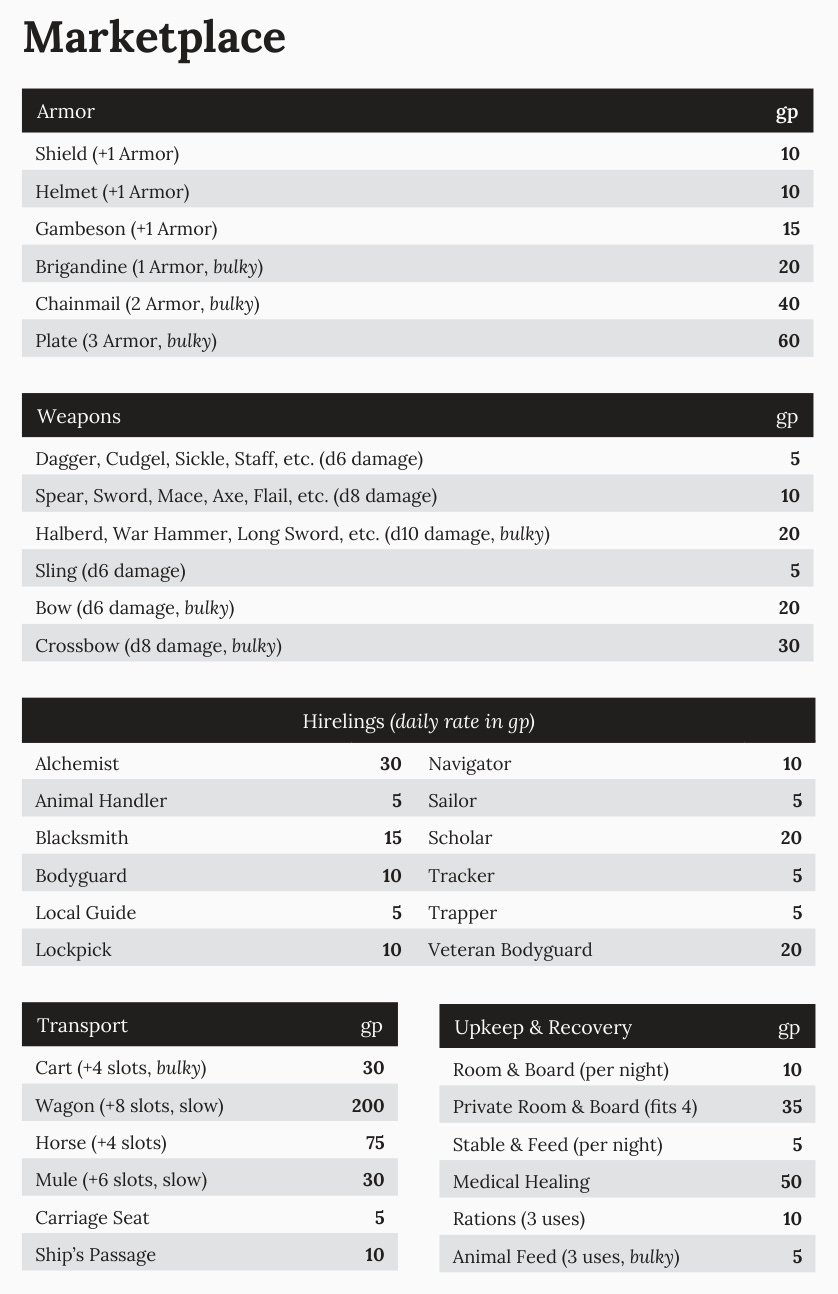
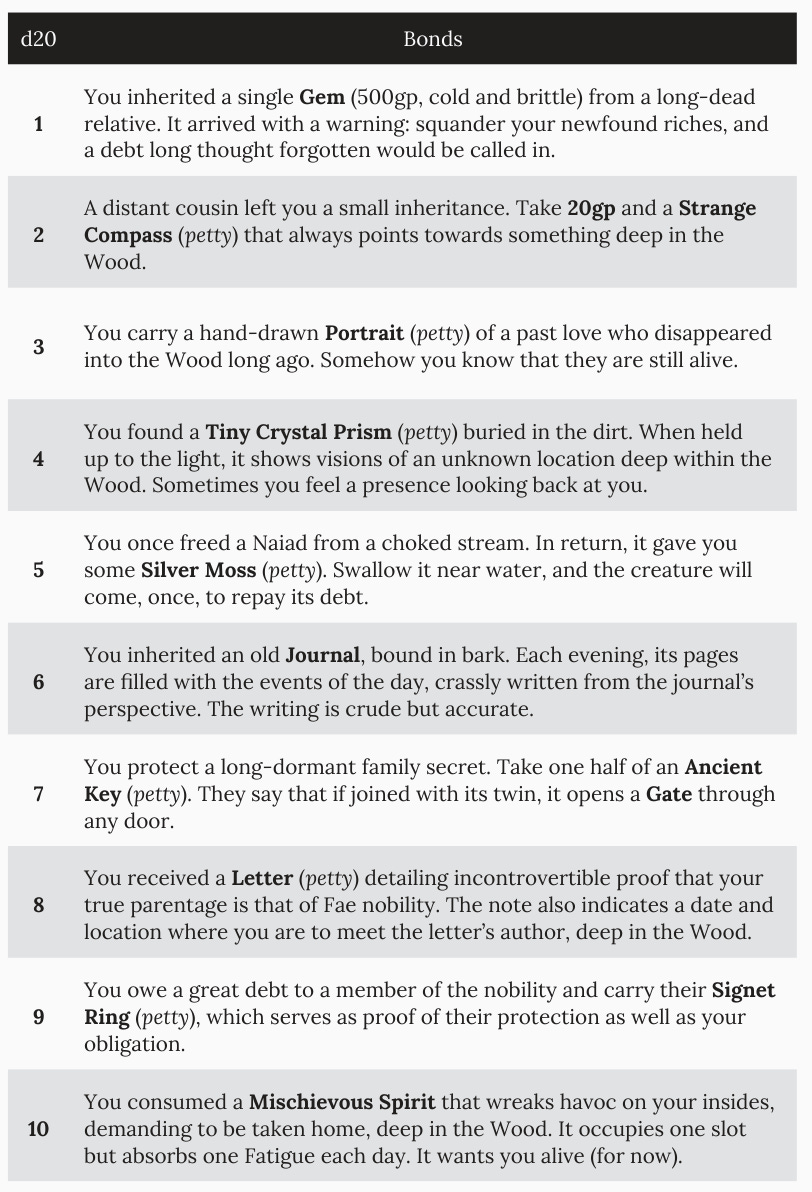

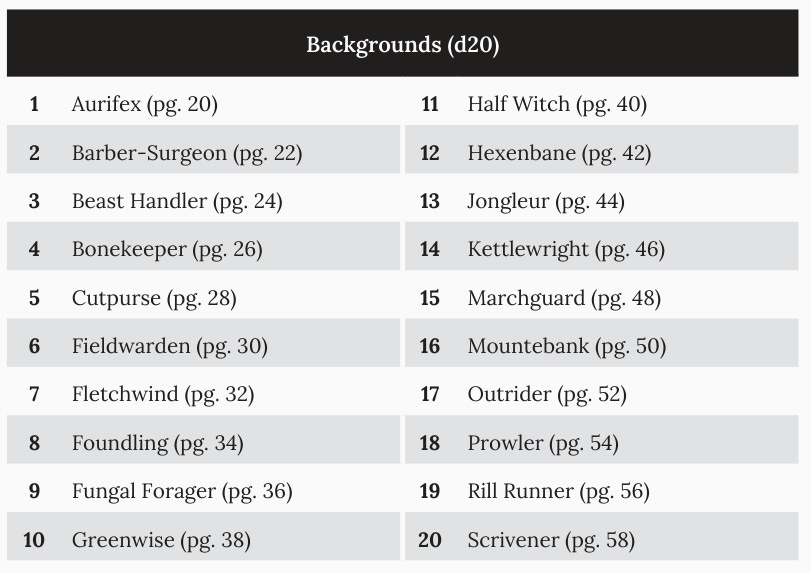

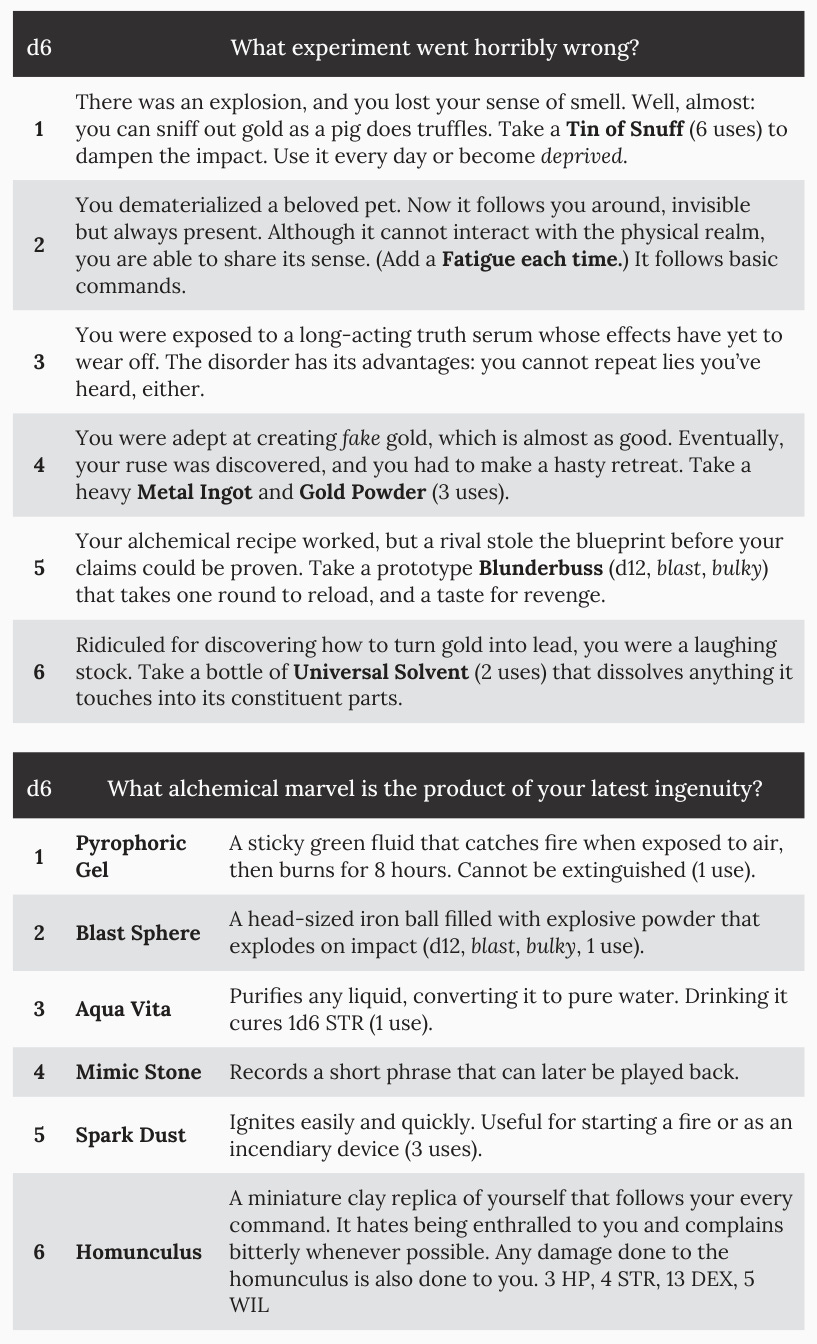
Hey, thanks for the review!
I'd like to point out one thing about your comments in the section on inventory. The goal of the system is to encourage hirelings, carts, and mounts! In my 150+ playtest sessions (not including PbP) this was generally the way any perceived inventory limitations were dealt with. It's not a bug, it's a feature! I enjoy the micromanagement of inventory, and carts, etc. are so much more valuable as a result.
Also, there are dozens of Cairn backgrounds folks have written that more closely hew towards traditional OSR classes, if that's your thing. I have collections full of them on my Itch page.
Regardless, I can appreciate folks wanting to play games more to their taste.
PS: I'm thinking of putting out a Cairn 1.5; basically the rules and procedures language from 2e but with 1e style chargen. Seems like it might please some folks, I dunno.
Hey Creampuff. Dropping the cleric, have you looked into DCC Lahnkmar? Fighter, Wizard, Thief. Humans only.
Also, a defense for the price might be keeping the party poor? You buy a sword once, but you always need a place to stay? Dunno, just throwing darts.